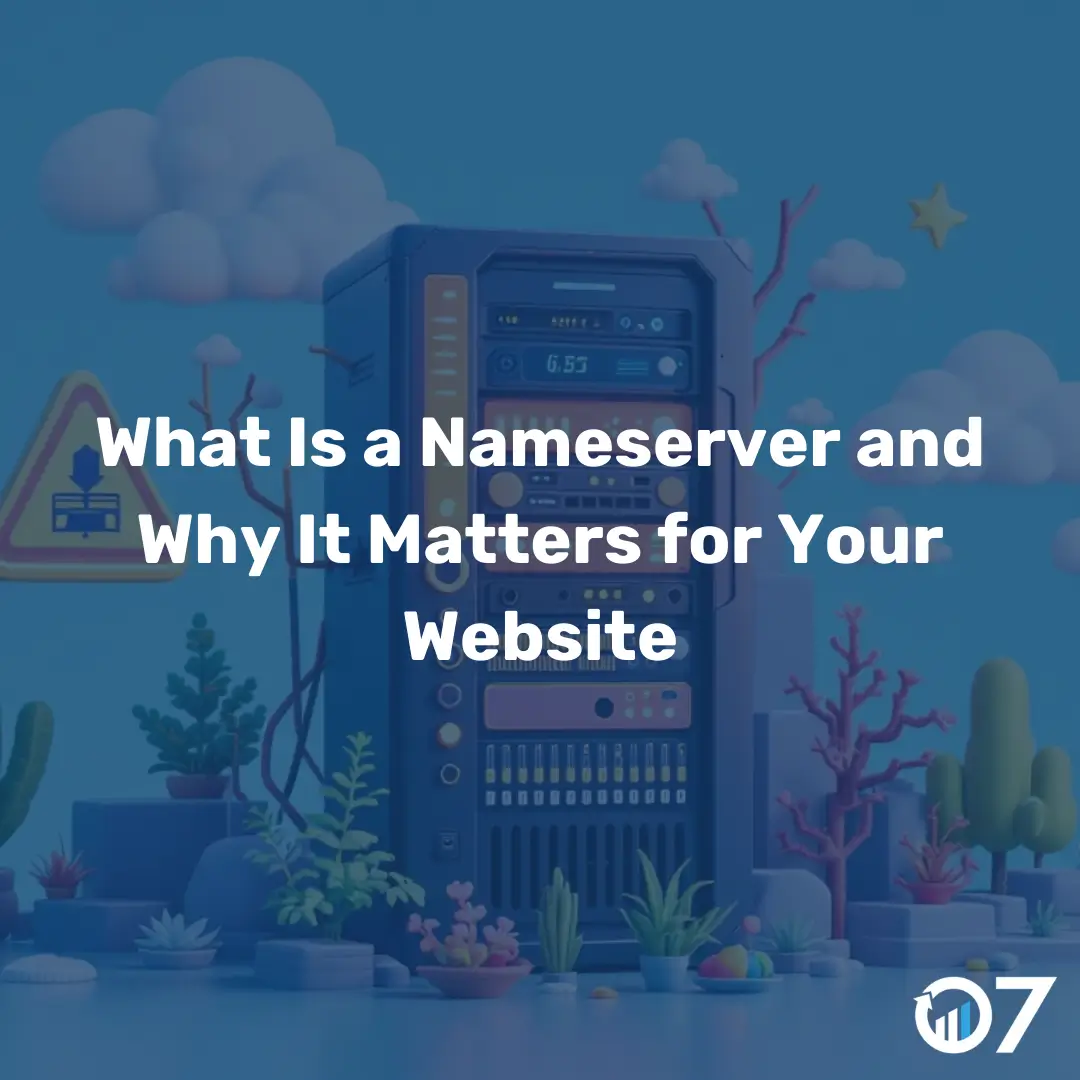What is a nameserver, and why does it matter for your website? Understanding this can greatly improve your website’s performance and reliability.
Understanding Nameservers
When I first started building websites, I had no idea what a nameserver was. I might have guessed it had something to do with domains, but it’s much more than that. Nameservers play a crucial role in connecting domains to websites through IP addresses.
What is a Nameserver?
In simple terms, a nameserver is a specialised server on the internet used to handle queries regarding the location of a domain name’s various services. Think of it as a translator that converts human-friendly domain names into IP addresses that computers use to identify each other on the network.
How Nameservers Work
When you type a domain name into your browser, your computer needs to know the IP address of the server hosting that domain. This is where nameservers come in. They act as a directory that your computer queries to find the correct IP address.
Step-by-Step Process
- You enter a domain name (e.g., www.example.com) into your browser.
- Your browser sends a query to a DNS resolver, asking for the IP address of the domain.
- The DNS resolver then queries a root nameserver, which directs it to the appropriate top-level domain (TLD) nameserver (e.g., for .com).
- The TLD nameserver points the resolver to the authoritative nameserver for the domain.
- The authoritative nameserver provides the IP address of the domain to the DNS resolver.
- The DNS resolver returns the IP address to your browser, which can then load the website.
Why Nameservers Matter for Your Website
Understanding nameservers is essential for several reasons. They impact your website’s accessibility, speed, and overall user experience. Let’s dive into why they are so crucial.
Website Accessibility
Without nameservers, users would have to remember and enter IP addresses instead of domain names. This would make websites much harder to access. Nameservers simplify this process, making your website more accessible to users.
Impact on Speed
Nameservers can affect the speed at which your website loads. Faster nameservers reduce the time it takes to resolve a domain name, leading to quicker load times for your website. This can significantly improve the user experience.
Reliability and Uptime
Reliable nameservers ensure that your website is always accessible. If your nameserver goes down, your website becomes unreachable. Therefore, choosing a reliable nameserver provider is crucial for maintaining your website’s uptime.
Choosing the Right Nameserver Provider
Not all nameservers are created equal. When selecting a nameserver provider, consider factors such as reliability, speed, and customer support. Here are some tips to help you choose the right provider.
Reliability
Look for a provider with a strong track record of reliability. Check reviews and uptime guarantees to ensure they can keep your website accessible at all times.
Speed
Choose a provider known for fast DNS resolution times. This can help improve your website’s load times and overall performance.
Customer Support
Good customer support is essential. Choose a provider that offers 24/7 support to help you quickly resolve any issues that may arise.
Setting Up Your Nameservers
Once you’ve chosen a nameserver provider, you’ll need to set up your nameservers. This process typically involves logging into your domain registrar’s control panel and updating your domain’s settings. Here’s a step-by-step guide:
Step-by-Step Setup
- Log in to your domain registrar’s control panel.
- Navigate to the DNS settings for your domain.
- Find the section for nameservers and select the option to update them.
- Enter the nameserver addresses provided by your provider.
- Save the changes and wait for the DNS propagation to complete. This can take up to 48 hours.
Common Issues and Troubleshooting
Even with the best nameservers, issues can arise. Here are some common problems and how to troubleshoot them.
DNS Propagation Delays
After updating your nameservers, it can take up to 48 hours for the changes to propagate. During this time, your website may be intermittently inaccessible. Patience is key, but if the issue persists, contact your nameserver provider for assistance.
Incorrect Nameserver Settings
Double-check that you’ve entered the correct nameserver addresses. A simple typo can prevent your website from being accessible.
Nameserver Downtime
If your nameserver provider experiences downtime, your website will be inaccessible. Choose a provider with a strong uptime guarantee and reliable infrastructure to minimise this risk.
Conclusion
Understanding what a nameserver is and why it matters can greatly impact your website’s performance and reliability. By choosing the right nameserver provider and setting up your nameservers correctly, you can ensure your website is always accessible, fast, and reliable.
For more insights and tips on website management, check out our blog at 07 Heaven Marketing Blog or contact us via email at info@07hm.co.uk or telephone 01702 410663. We’re here to help you make the most of your online presence.





